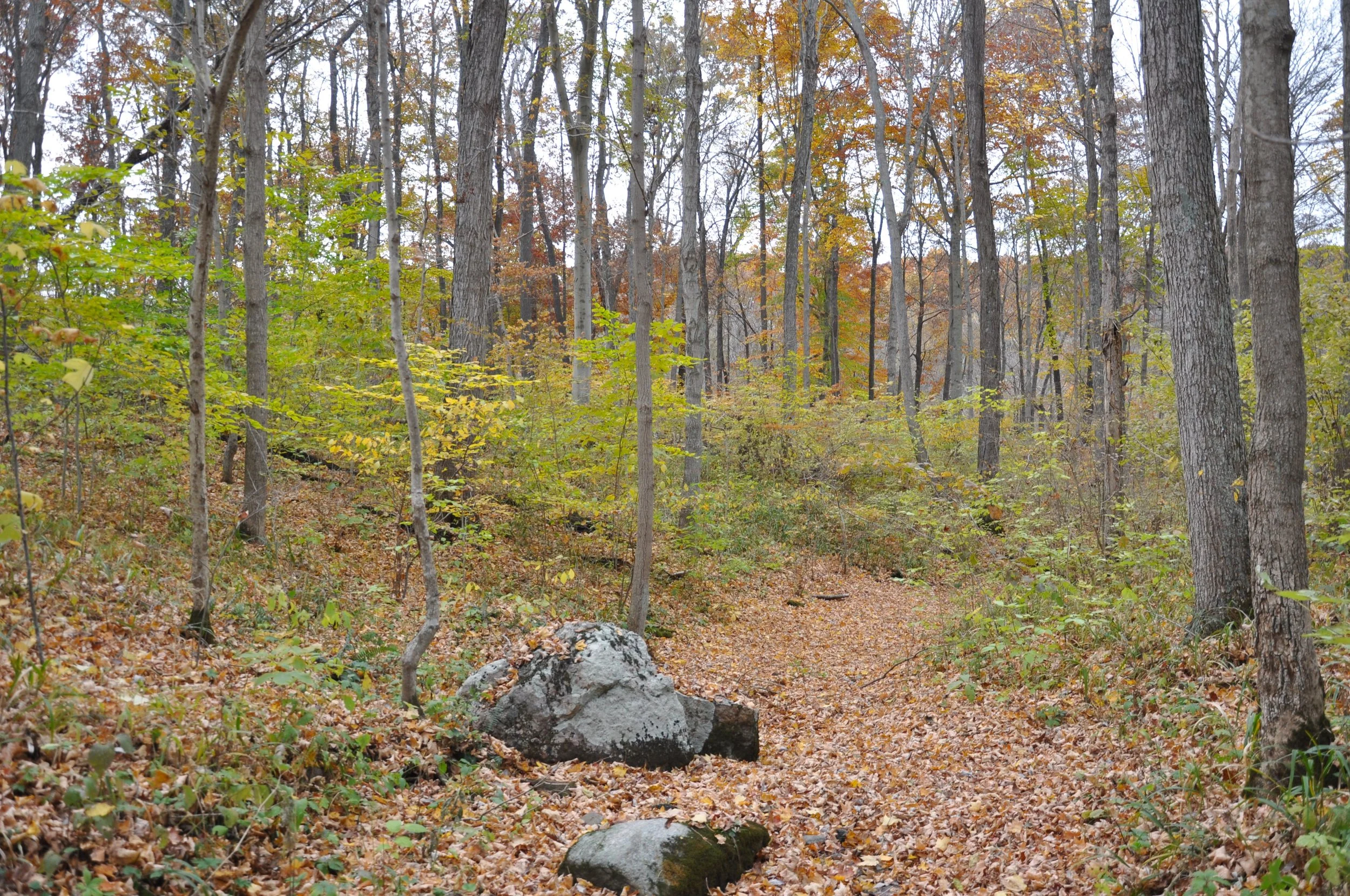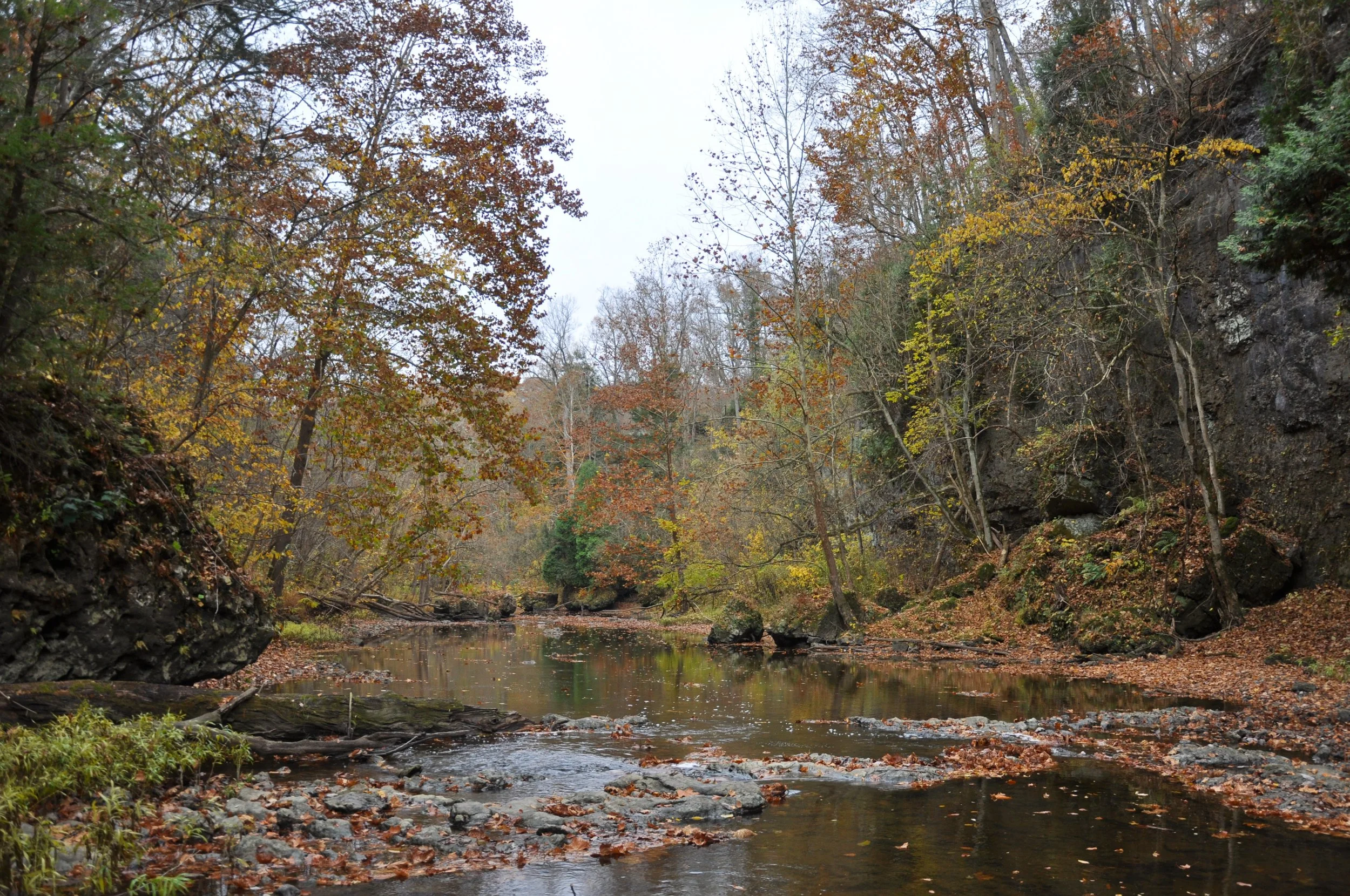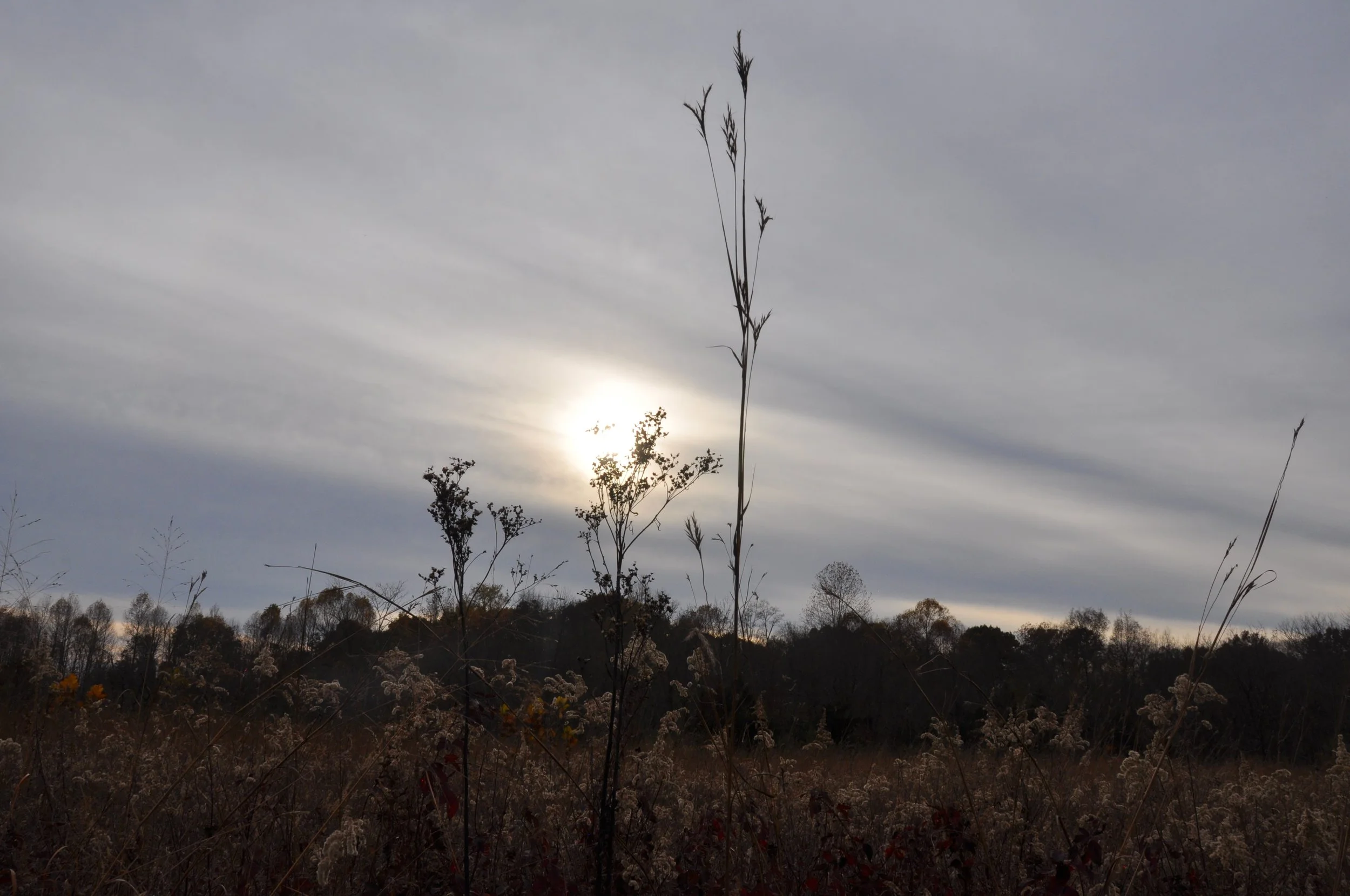Inside Time: Reflections from the Forest
Radiant autumn woods, Barrett’s Rim Trail
By Audrey Hackett
I recently spent several days at the Highlands Nature Sanctuary in Bainbridge, Ohio, wildlands that form part of the Arc of Appalachia’s preserve system. The stay, my second over the past year, touched off this drift of thoughts about place, time, nature, and regeneration.
Dusk comes early in the woods. The sun hikes down the sky, slowly, in no hurry, yet its progress is somehow swift. Behind the trees it slides, out of sight for the span of the great night that seems less to be falling than rising — rising from the forest floor, and from the creek bed, the place where water sleeps.
Hemlocks sleep standing up, like horses. From their branches comes a slow downward tick of time — tawny needles like the minutes on the clockface, falling all night. If the moon were full, it would be the bare face of the clock, but the moon is dark, the face that shines with a deeper light, more felt than seen. Conifers lose about a third of their needles each year, I’m told. That seems like the right amount of loss.
I am here, again. Did I ever leave? Or did only a third of me leave, the other two-thirds remain? The places we love, can we ever really leave them?
*
Mornings I sit on the deck. Shadows fall, then the shadows’ leaves. Eight or nine yellow jackets come near. I try to think of them as tiny gods. They come to bless — with little lightning bolts held in reserve. Kissed or smote? The art of receiving the gods is not attracting one or avoiding the other, but figuring out which is which. Clumsily, I try propitiation — grapes and bits of ripe pear. They’re interested, but not fooled. They are here, in some sense, to encounter me.
I am here to encounter them. A poem by Goethe lifts off the page of a book in my hands. In it he speaks of the “sacred open mystery.” Another line from a book half-forgotten comes into mind: the world, the author wrote, is a series of “open wholes.”
My thoughts are floating high, high. Below me, suddenly, passes a Great Egret, tail fanned like a deck of radiantly blank cards, fortune teller of the void. He’s following the creek west. That’s the direction the day is flowing, too. But then, after a courteous pause, a Bald Eagle glides east, tracing the creek the other way. It is the Eagle’s prerogative, I gather, to turn the current of time.
Rocky Fork Creek, Kamelands Trail
*
But that’s not my prerogative, not today. A morning-into-afternoon hike takes me on a long, gradual ascent to the top of a ridge. I think of a teaching from Katie Egart, of the Yellow Springs Dharma Center: “Good at the beginning, good in the middle, good at the end.” How sweet it is to be on the ridge, though. To be in the middle, where rest and the Eagle’s view reside. The day has been windless, but now a steady, exhaling breeze blows over the ridge. The forest grass responds by bending all one way. I respond by turning into the wind.
On the way down — it is good — I wander solitary as a butterfly. Like the butterfly I glimpsed on the ridge, a monarch, gliding through the woods. If a group of butterflies is known as a kaleidoscope, then a lone butterfly might be a grain of colored glass. Invoking the whole, yet slenderly, radiantly … complete.
*
Dusk again. I am here, again. What is regeneration if not that? A continual returning. The word is intriguing, carrying the sense of “back to the original place” and “anew, once more.” It has a broad “sense-range,” as the etymologists say, implying both restoration to a former state, and transition to a new state. A creative tension of opposites — a meaning held open.
The natural world permits, encourages, requires this. Any desire to place ourselves on different footing with Great Nature must begin with sensing and knowing where it is our feet already stand. Here. Gravity pulls our feet to the Earth. We lift up, and are pulled back again. We are always coming back as we go forward. Rightly understood — regeneratively understood — “forward” is a flow we don’t direct, but are of and in.
Leaving Barrett’s Rim Trail at dusk
*
A few stars, the yips of coyotes. Voices I don’t know. Time and space trade positions. Night is a place. These woods are a pulsing of time.
*Audrey Hackett is associate editor of the Agraria Journal.



